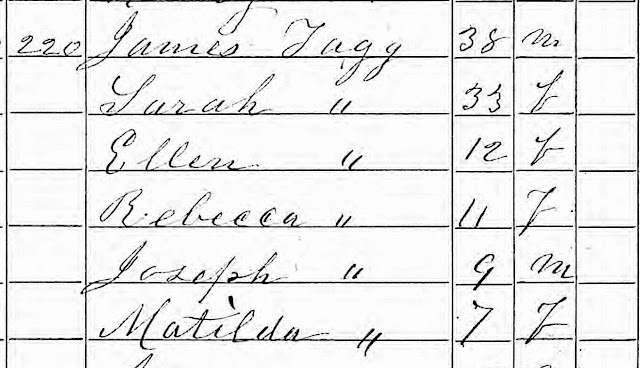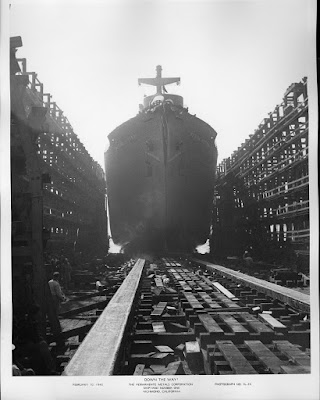 This past Friday, I taught a class on using U.S. Census records in your genealogy research. It was
This past Friday, I taught a class on using U.S. Census records in your genealogy research. It was well received and even my co-worker, Lisa commented that she learned new techniques.
Here are some of the highlights:
HISTORY/What it is:
- Every 10 years since 1790, the United States has counted everyone who is living in the country. This is done to apportion how many representatives each state gets to send to Congress.
- Because of privacy concerns, the records are not released to the public for 72 years. Hence, we cannot access the 1950 census until 2022.
Why do we want to use the census?
- Can show us where our ancestors lived at the time of the census.
- Later censuses give us the occupation of our ancestors.
- Later censuses list the names of the wife and children and their approximate birth year.
- Can be used to estimate relative economic status of our ancestors.
- Can help identify the daughters in a family, who get married (thereby changing their names) and move away.
What to look out for (weaknesses):
- Spelling can be very inexact. In the past, spelling wasn't as standardized as it is today. How a name is recorded depended on the person writing it down. Accents can confuse the enumerator.
- Some people were deliberately not counted, such as Native Americans or enslaved people.
- Other people with a strong distrust of their government, would avoid being counted or outright lied.
- Birthdays and exact ages were not as precise in the past and are often just estimates.
- For the earliest censuses, the enumerator was not well trained, did not have to have good handwriting and often had to provide their own paper.
- The enumerators had to make 2-3 copies of the census, leading to more errors in their work. Some even had their children help with the copying!
 |
| In this excerpt from the 1850 Census for Gallia County, OHIO, my ancestor's name is spelled JONSON, not a spelling I would have thought to look for. |
What you will find in the different census schedules:
- 1790-1840 – The censuses for these years only list the head of the household by name, and then list the remaining inhabitants by gender and age group.
 |
| 1840 Census for Gallia County, Ohio. Only the head of the household is listed by age. Others are only indicated by age range and gender. |
- The 1850 census is the first census that lists everyone in the household by name, gender and age. It does not say what their relationship is to the head of the household and cannot by themselves be used to prove parentage.
- 1860 is the census that was taken right before the Civil War. The War caused many people to relocate.
- The 1870 census was taken after the Civil War. It is the first census where formerly enslaved individuals are named.
- The 1880 census is the first census that lists everyone's relationship to the head of the household.
- The 1890 census was mostly destroyed by fire. There was a supplemental census of Civil War veterans and most of that has survived.
- 1900 census lists a person’s year of immigration into the United States, as well as their naturalization status.
- 1910 census lists whether the person was a union or confederate veteran of the Civil War. It also asks how many children born to this woman and how many are still alive.
- 1920 census asks about the year of naturalization and native language.
- 1930 this census asked 32 questions, including did the family own a radio set!
- 1940 this census asked 50 questions, including where each individual lived in 1935. Lines 14 & 29 have supplemental questions asked at the bottom.
- 1950 and later censuses will not be released until 72 years after they were taken. That means we have to wait until 2022 for the release of the 1950 census.
- The censuses that have not yet been released, can be ordered via form BC-600from the U.S. Census Bureau. Current cost $75 : https://www.census.gov/history/pdf/bc-600-2013.pdf
Accessing the censuses at these web sites:
- FamilySearch.org free to use anywhere there is Internet access
- Heritage Quest at home through your library and using your library account information
- Ancestry Library Edition available from inside your library.
- Also available at other subscription sites such as:
- Ancestry.com
- FindMyPast
- MyHeritage.com
- Look on the page before and the page after for neighbors and other relatives.
- If having trouble locating a family with a common name, try looking for the children with less common names.
- You can search by first names only, combined with locality.
- Use wildcards to search names that can have different spellings:
“?” Substitutes for one letter. Ex. "Eli?abeth" for Elisabeth or Elizabeth
- Record the details to compare with other information you know about the family.
- Compare the handwriting for deciphering hard to read names. L, S, and T and F
 |
| Here is the James TAGG family in the 1860 Census. The "T" here looks more like an "F" to me. |
- “Browse” the whole census for the area your ancestors lived. Maybe names were spelled wrong or indexed wrong.
- Check the last pages. If households were missed or weren’t copied in the right place, they were added here.
- Additional notes could be added on the last page.
- Remember: as with all genealogical research, start from the most recent to the oldest records. So your census search most likely starts with the 1940 census.
- Make a photocopy of the enumeration. If possible, include the headings listed at the top of each page. Download it to save it as digital file. Can be saved to your home computer or to the cloud.
- If possible, verify the information you discover in primary sources, like vital records.
- Find a neighbor from a known census and then search for that neighbor in the lost census
- Gender Confusion – Enumerator might put wrong gender if confused by name/nickname – Franka
- M1 – means one marriage
- M2- more than one; two or MORE
- 1890 Union Veterans and Widows Census
- Agricultural Census these special censuses, taken in 1850, 1860, 1870 and 1880 lists what agricultural items were being produced in those given years. They list the number of cows, horses, pigs, and sheep as well as how much hay, corn and wheat were being grown.
 |
| Headings from the 1850 Agricultural Census |
 |
| 1850 Agricultural Census for Gallia County, OHIO. My ancestor, Joshua JONSON/JOHNSON is a small farmer compared to his neighbors, with only 40 acres. |
- Mortality Census lists deaths that occurred in the 12 months preceding the census. These were taken in 1850, 1860, 1870, 1880, and 1885.
 |
| Excerpt from the 1880 Mortality Schedule for Gallia County, Ohio. My ancestory, John Williams is the oldest person listed, dying at the age of 84 from pneumonia. |
- Slave Census Schedules during the 1850 and 1860 censuses, slaves were counted separately. Usually these do not list individual names, but only list the age, sex and color of the person, along with the owner’s name.
- State Census - some states have produced their own separate censuses
Type of information collected and availability of these censuses vary
widely. Consult State Census Records by Ann S. Lainhart,
for more information.
Available from Ancestry
Published tax lists
Index to Ohio Tax Lists 1800-1810
Early Ohio Tax Records
1812 Census of Ohio: A State-wide Index of Taxpayers
MCDL Genealogy Blog - Voters' Records
So dig into those census records, but be sure wring every iota of information that you can from them!
*James' wife Sarah, seems to have dropped a few years between the 1860 and 1870 Census.We would expect her age to be listed as 43-44 years old from her age on the previous censuses. While it wasn't unusual to see that people did not list their ages consistently, to lose 15 years when you should have aged 10 is really bizarre. It wasn't until I ordered James' Civil War Pension records that I found the solution. His first wife, Sarah (Sally) McComas had died shortly after the Civil War. James relocated out to Illinois and remarried to Nancy Bee. She died a year later. Then James married for a third time to another, younger woman whose first name was also Sarah!
SOURCES:
widely. Consult State Census Records by Ann S. Lainhart,
for more information.
 |
| 1856 Jefferson County, Iowa census. Here Griffin Hedges is listed with his wife and young children. |
- City and County Directories
Available from Ancestry
 |
| Johnson listings from a 1948 Directory of Medina County, Ohio. |
- Tax Lists
Published tax lists
Index to Ohio Tax Lists 1800-1810
Early Ohio Tax Records
1812 Census of Ohio: A State-wide Index of Taxpayers
- Voter Registration Lists
MCDL Genealogy Blog - Voters' Records
 |
| 1940 Los Angeles County, Voters Registration list. Note that Ronald Reagan is listed as a Democrat! |
So dig into those census records, but be sure wring every iota of information that you can from them!
*James' wife Sarah, seems to have dropped a few years between the 1860 and 1870 Census.We would expect her age to be listed as 43-44 years old from her age on the previous censuses. While it wasn't unusual to see that people did not list their ages consistently, to lose 15 years when you should have aged 10 is really bizarre. It wasn't until I ordered James' Civil War Pension records that I found the solution. His first wife, Sarah (Sally) McComas had died shortly after the Civil War. James relocated out to Illinois and remarried to Nancy Bee. She died a year later. Then James married for a third time to another, younger woman whose first name was also Sarah!
SOURCES:
- Lainhart, Ann S. State Census Records
- Szucs, Loretto Dennis The Source: a Guidebook of American Genealogy
- Szucs, Loretto Dennis, Finding Answers in U.S. Census Records
- Thorndale, William Map Guide to the U.S. Federal Censuses, 1790-1920
- Gale Courses: http://education.gale.com/l-medinacdl/
- www.census.gov
- Censational Census Webinar- Mary Kircher Roddy https://familytreewebinars.com/download.php?webinar_id=548





























